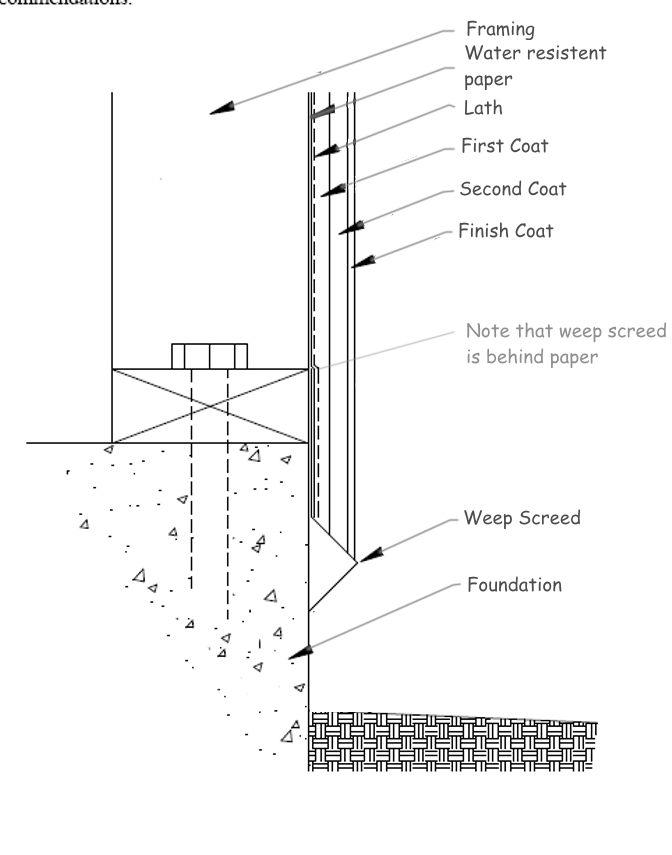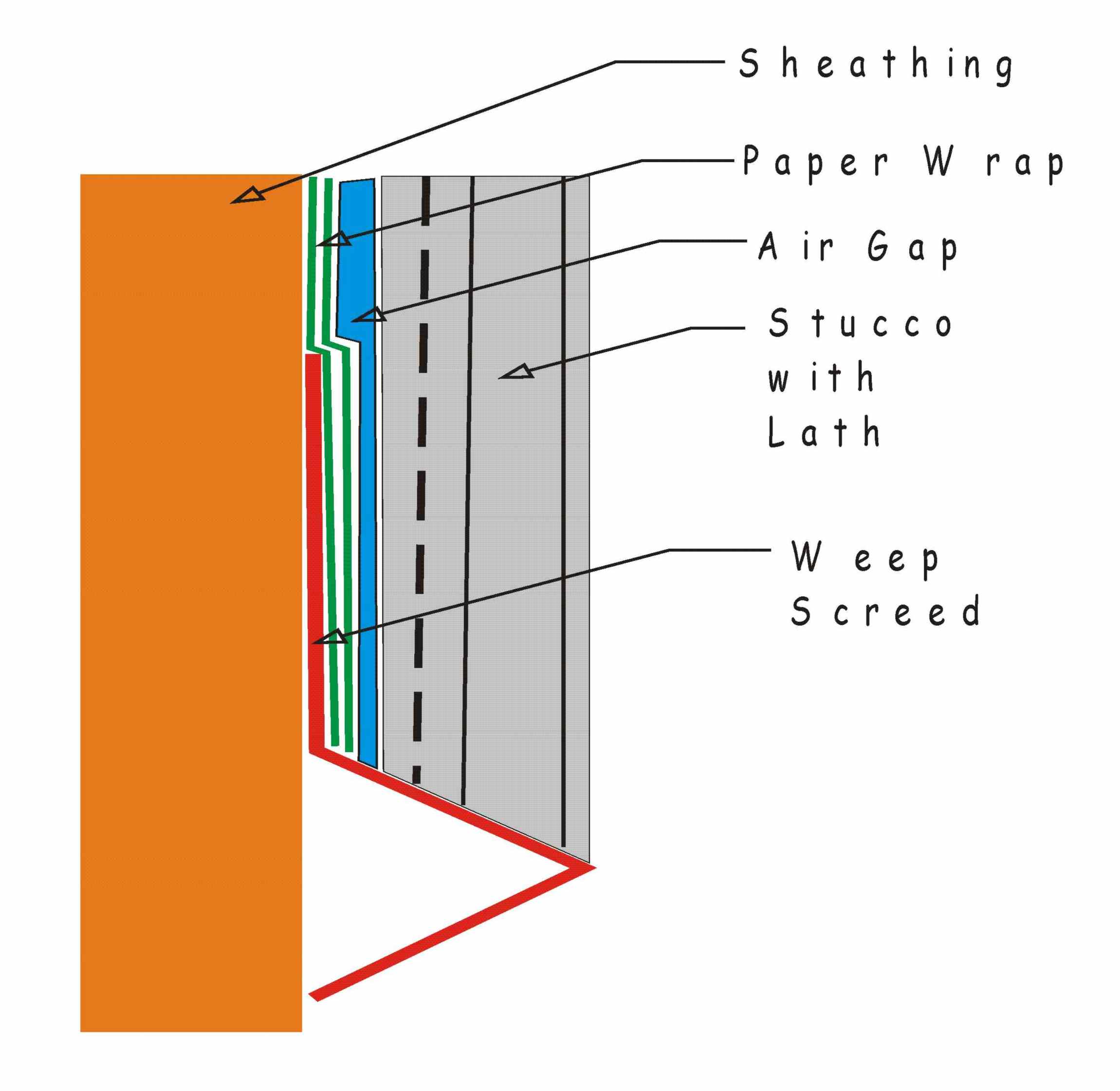
These walls have been around for a couple of thousand years. They are not new... But recently we have manipulated how they are constructed. Let us start off with the normal residential stucco wall...

The Process starts by enclosing the house in some sort of sheathing. Plywood or plastic foam or particle board of some sort.
The sheathing is then wrapped with two layers of a water proof paper. Each layer is wrapped with an overlap to create a water tight layer.
Lath (industrial strength chicken wire) is then fastened to the framing or sheathing. The lath is supported 1/4 inch in front of the paper layers. Metal devices such as weep screeds are added to interface the stucco to other areas or terminate the stucco at the bottom of the wall.
The stucco is then applied. This is generally a three layer process. First a 3/8 inch layer that embeds the lath. It is allowed to cure for a few days then a second layer 3/8 thick is added. Again a cure period and a final finish layer 1/8 inch thick is added. Overall the stucco is 7/8 of an inch thick.
Now one of the crucial points. The stucco does not stick to the waterproof paper. It is in fact held to the wall by the lath. An air space forms as the stucco cures between the stucco and the paper.
Here is an expanded detail to show how all this looks..

Now let us remember the holes in the weep screed. If water should manage to get to the air space from a leak or even by coming through the stucco it runs down the air gap and exits through the weep screed holes. Both the paper and the stucco itself allow water vapor to pass through. So if moisture does manage to get past the stucco it runs out the bottom through the weep screed or is evaporated through the stucco or the paper.
Now that was the conventional technique. Let's see what Del Webb did.